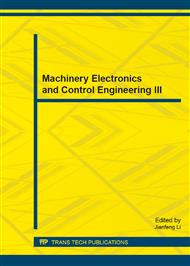p.699
p.703
p.707
p.713
p.717
p.721
p.727
p.731
p.738
The Research of Data Stream Classification Based on Rough Set Theory-Neural Network Integration
Abstract:
According to the high speed of data arriving, a large amount of data and concept drifting in the stream model, combining the techniques of rough set theory, neural network and voting rule, we put forward a new data stream classification model, which is a multi-classifier integration based on rough set theory, neural network. Firstly, it reduces all attributes using rough set theory; secondly, it constructs base classifiers on the data chunks after the reduction of attributes using the improved BP neural network; finally, it fuses various base classifiers into an ensemble by voting rule. Through applying the model to classify data stream, the experiment results show that the ensemble method is feasible and effective.
Info:
Periodical:
Pages:
717-720
Citation:
Online since:
December 2013
Authors:
Price:
Сopyright:
© 2014 Trans Tech Publications Ltd. All Rights Reserved
Share:
Citation:


